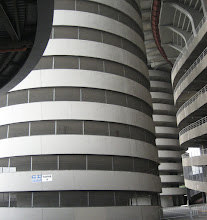The transfer season is upon us, with the mercato officially due to open in two weeks. Rumors about players and their pricetags have been making the clickbait rounds for weeks or even months now, with some increasingly unrealistic player valuations being thrown around in the media. For example, reports say that Roma want €60 million for 22 year-old Zaniolo, who had two ACL injuries in less than a year. Meanwhile, Manchester City just paid a reported €60 million transfer fee for 21 year-old Erling Haaland. You do not have to be any type of an expert to know that one of these things is not like the other. But what is the deal with player valuations? What's in a number?
 |
| €60 million? One of these is not like the other |
For years, there was some sort of common sense that guided Serie A clubs in their player valuations. More than one director actually served bans for increasing transfer fees for bookkeeping purposes. Preziosi immediately comes to mind, he and Galliani did some very shady business over the years, and Milan certainly paid some very inflated prices for some very subpar Genoa players. Preziosi served bans and Galliani nearly stepped down after Barbara Berlusconi discovered their little secret.
This year, however, many clubs were charged with doing much the same thing in what was known as the Plusvalenze scandal. There were 11 clubs and 59 different directors charged by the FIGC with inflating transfer fees to boost their capital gains, which is definitely criminal behavior in the business world. However, crafty lawyers argued that the FIGC had no way to effectively evaluate the true worth of a player, and all charges were miraculously dropped.
 |
| Paratici, Nedved, and Agnelli get away with more crimes... just another day at Juve |
Even though everyone knew what these clubs had done was wrong, even the FIGC's appeal was thrown out for their lack of a set of actual rules beyond common sense and common decency about player valuations. Clubs who had actually played by the rules were punished for their honesty, and those other 11 clubs and their directors made Preziosi look like a first time shoplifter who had done hard time while they got away with murder.
Within Serie A, player development is poor. There are so many problems with Italian football, not the least of which are infrastructure, organization, the ability to agree on anything at all, etc. Clubs become desperate to make money on players, and their valuations tend to be based on how much money they need to make rather than how much money the player is worth.
 |
| Zaniolo won the Conference League Final for Roma and is clearly talented, but is he worth €60 million? |
Zaniolo is a perfect example. How many 22 year-old players are truly worth €60 million, especially in a post-COVID market? But Roma are in debt and they need some cash. Zaniolo having had two ACL surgeries in a year makes him an even higher risk, and should significantly lower his valuation. If Milan actually offered Roma €35 million for the player, as the rumors suggest, it is a deal that Roma should have considered lucky to receive and should have accepted immediately before Milan changed their mind.
With the Plusvalenze case being dropped, Serie A clubs now have permission to literally ask anything for a player without consequence. If another club is stupid enough to pay the price, then Italian clubs will benefit from bidding wars from foreign clubs who actually have the money to pay those inflated prices. Which means there will be even less talent left to play in Serie A. It is not like clubs who profit from those player sales will reinvest that money in bringing in good players to the league, either. They will pocket the money to balance their books because their clubs are so poorly managed.
 |
| What it looks like to win while playing by the rules |
Meanwhile, at a club like Milan, Maldini and Massara have worked miracles with basically pennies to find talented players at very low costs in order to properly balance the books and play within UEFA's Sustainability Rules. So they are priced out of Italian players like Zaniolo or even Sassuolo's attacking gems, whose bidding price starts at €40 million, according to their Sporting Director. No wonder Milan has looked outside of Italy to build their squad. Yet Milan need a certain number of Italian players in their squad to meet league and UEFA requirements. These corrupt player valuations in Serie A could literally see Milan pay some ridiculous fee for some subpar Italian player who will play alongside foreign talents and champions brought in for a fraction of their price.
When it comes to player valuations, what's in a number? In Serie A, it is largely based on how poor or corrupt your bookkeeping is and how desperately your club needs the cash. For clubs like PSG, "It doesn't matter, just buy all the players" seems to be the rule. English clubs have the income to support players with high transfer fees, but post-COVID, many clubs are increasingly interested in at least a realistic player valuation. If FIFA and UEFA were not so busy trying to hide their own corruption, perhaps they could come up with with a proper system for player valuations. But considering they are just now addressing the astronomical agent fees that have crippled the bank accounts of clubs for so long, do not hold your breath. Just be grateful that at Milan, we have a Technical Director that is not corrupt and is also capable of finding players who are worth more than their asking price.
This post inspired by the music of Muse's "Hysteria"
 Reviewed by Elaine
on
Rating:
Reviewed by Elaine
on
Rating:
